0 shares
For many of us, driving is a relaxing experience that allows us to unwind a bit on the way home from work. When excess tire noise becomes loud enough to penetrate that peace, it’s time to do something about it. In this article, we will discuss 9 ways on how to reduce road noise from tires.
Many things can contribute to the increasing volume of your tire noise. Understanding the causes of it can help you to avoid the problem in the future. Of course, some tires are just loud from the outset, and we’ll discuss that too. Sometimes, the best thing to do is get new tires, so we’ll also cover some pointers on how to pick the quietest ones.
For more information on soundproofing some other car parts, you might be interested in our articles:
How to Fix Car Speaker Rattle
How to Quiet Noisy Strut Mounts
How to Quiet a Loud Exhaust
How to Fix Noisy Lifters
Will Thicker Oil Make an Engine Quieter?
Page Contents
Causes of Tire NoiseHow to Reduce Road Noise From Tires1. Soundproof the Floor2. Add Mass Around Wheel Wells3. Replace Door Seals4. Fill Your Tires5. Get Your Tires Rotated & Balanced6. Soundproof Your Doors7. Replace Your Tires With Quieter Ones8. Drive at Slower Speeds9. Change Tires When NeededWhat to Look For in a Quiet TireConclusion
Knobby Tread Patterns – Tires with really thick tread or knobby tread patterns are noisy by nature. You’ve probably heard the loud humming sound they produce under a large pickup while they drive down the street. This is actually from the tread catching and crushing air pockets at an incredibly rapid rate.
Wider Tires – The more surface area that’s in contact with the ground, the more noise the tire will make. Performance tires tend to be wider for improved traction, but this also means they create more noise because they have a larger area of contact with the asphalt.
Unbalanced Tires – If your tires are out of balance, it can introduce significant amounts of vibration, leading to a much noisier ride.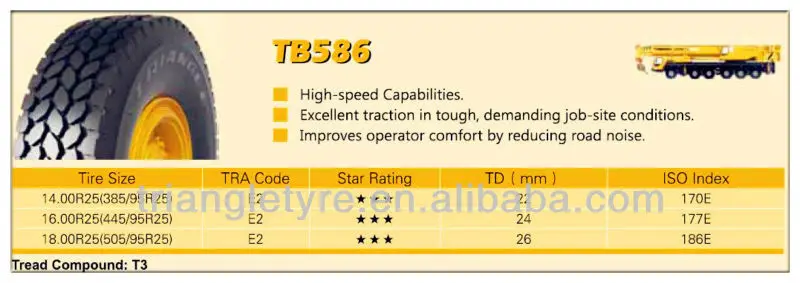 On top of this, unbalanced tires also wear much quicker, reducing the lifespan of your tires overall.
On top of this, unbalanced tires also wear much quicker, reducing the lifespan of your tires overall.
Underinflated Tires – When your tires are underinflated, they spread out and flatten out more, creating a larger contact patch with the road. The more of the tire that contacts the road, the more tire noise will be created.
Tires That Need to be Rotated – Rough, loud rides are often caused by tires that need to be rotated. If your tires haven’t been rotated in a long time, they could be causing lots of excess vibration that makes your ride much noisier and less pleasant. This also ads more wear to the tire, reducing its overall life expectancy.
Off-Road and Performance Tires – Standard passenger and highway tires are made with a rubber compound intended to help keep the ride soft and quiet. Snow tires, off-road tires, and even performance tires are built with different goals in mind. Because of this, they are created with features that are excellent for their intended uses but don’t make for the quietest ride under normal driving conditions.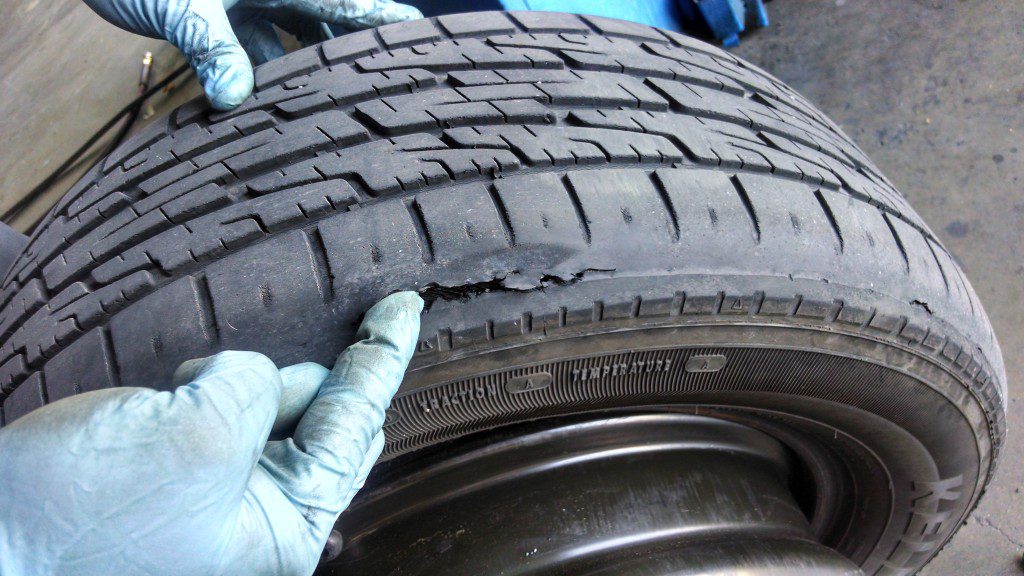 Some of these features are deep and aggressive tread patterns, stiffer sidewalls, and a wider contact area.
Some of these features are deep and aggressive tread patterns, stiffer sidewalls, and a wider contact area.
Unevenly Worn Tires – If you haven’t had your tires rotated or balanced in a long while, then the tread may be wearing unevenly. Suspension or alignment issues can also cause this.
If the tread is worn unevenly, one tire may become noticeably louder than the others. This will also create unnecessary vibration, which also adds to the noise problem. All of this will put undue stress on your vehicle and shorten the lifespan of your tires.
Rubble Stuck in the Treads – It’s very common for little pieces of debris such as pebbles, sticks, etc., to get stuck in the tread of your tires. When your tire is rotating, this little piece continues to repeatedly hit the ground at a rapid pace, causing the tire to be much noisier than it should be.
Since your tires sit directly underneath the carriage, it makes sense that most of the noise you hear from them is coming up through the floor. As your car rolls down the pavement, creating some degree of noise is inevitable. That said, you can significantly reduce the amount of that noise that makes it inside your vehicle’s cabin by adding soundproofing material to the floor.
As your car rolls down the pavement, creating some degree of noise is inevitable. That said, you can significantly reduce the amount of that noise that makes it inside your vehicle’s cabin by adding soundproofing material to the floor.
There are several products available for soundproofing your carriage floor. Products such as Dynamat and FatMat both offer great sound blocking characteristics specifically intended for reducing noise in a vehicle. You can increase their effectiveness even more by adding an additional layer of mass loaded vinyl (MLV).
Another soundproofing material that you may consider is automotive sound deadening spray. It is designed to serve the same function as the rolled soundproofing materials, but in an easier and faster to apply a package that makes it simple to get into all the nooks and crannies. If you’d like to learn more about the sound deadening spray, read my recent post about best sound deadening spray for cars.
To install your Dynamat or MLV or to apply sound deadening spray, you will need first to remove your car’s seats and carpet. The carpet is molded and will fit right back into place with no problems. If using Dynamat or MLV, you will need to cut each piece exactly to fit the area where you’re installing it.
The carpet is molded and will fit right back into place with no problems. If using Dynamat or MLV, you will need to cut each piece exactly to fit the area where you’re installing it.
Dynamat and other rolled soundproofing materials explicitly intended for vehicles will have an adhesive back that allows them to be applied to the metal surfaces of your car’s interior. The MLV will require an additional spray adhesive, which could be rolled on or sprayed on. The soundproofing spray is sprayed on and then must be given sufficient time to cure before replacing the carpet and seats.
For more information on automobile soundproofing materials please see our article Kilmat vs Noico vs Dynamat vs Hushmat.
The open area surrounding your wheels is called the wheel wells. They are covered by a thin plastic insert that prevents dirt and debris from being kicked up into the vehicle’s body. However, it doesn’t do much to stop any noise from making it through.
To help reduce the amount of incoming noise leaking in through the wheel wells, we’re going to want to apply some sound-deadening material to the plastic inserts. There are two ways of doing this effectively. A layer or two on the outside of the plastic insert will help to stop some of that noise. For extra sound reduction, it’s advised that you remove the insert and cover the backside with soundproofing as well.
The Noico sound deadening mat is an excellent material choice for covering your wheel well inserts. It has an adhesive back that makes it easy to attach. You can also easily add a layer of Dynamat on top of the first layer to improve the sound blocking.
As an alternative to a rolled adhesive soundproofing material, you could try the soundproofing spray on the wheel well inserts as well. The soundproofing spray can easily be coated on multiple times for improved noise reduction, and it’s also very durable and should have no problems handling pebbles and debris shot up by the tires.
Sound will travel through any gaps or entry points that it can find. Your doors are the largest entry points into your vehicle and are, therefore an excellent place for noise to leak in. Normally, your door seals block out the excess noise by creating a tight seal. But what happens when your weatherstripping is worn out?
Over time, your vehicle’s door seals lose their shape by being repeatedly crushed by the door. At some point, the seal is no longer large enough to do its job effectively, and you’ll start to get leaks in the door where sound and air can easily break into your car. Installing new rubber weather draft seals will return your vehicle to its former state of quietness.
First, open your door and inspect the weatherstripping all the way around. Look for any damage, such as cracks, crushed areas, rips, tears, etc. If you see signs of any excess wear, then you should probably replace them.
One way to do this is by simply adding a second, larger seal.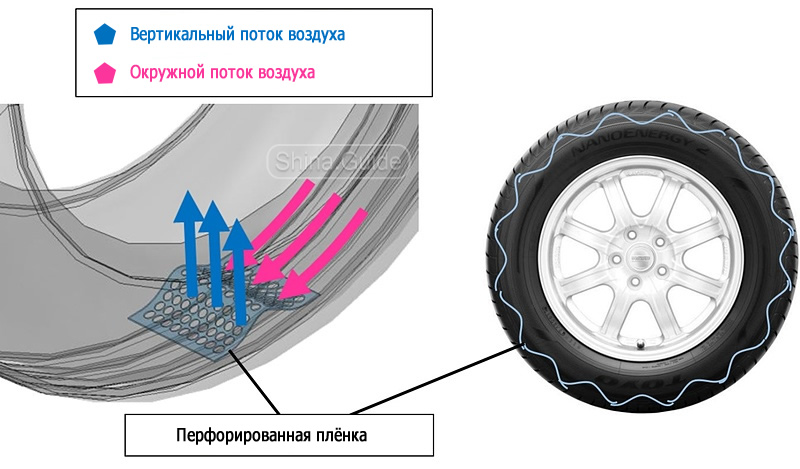 Many luxury vehicles come standard with this kind of setup, so it’s a proven method.
Many luxury vehicles come standard with this kind of setup, so it’s a proven method.
Another way is to replace your current weatherstripping. You can remove it with a razor knife. The new weatherstripping will have an adhesive backing that allows you to install it where the old one was easily.
We’ve already discussed how underinflated tires make more noise since they have a larger contact patch with the road. Keeping your tires fully inflated is one of the simplest ways of reducing the amount of tire noise your vehicle makes. To make things even better, keeping your tires properly inflated will also improve your gas mileage!
As a general rule, you should check the tire pressure of all four tires every month. This should be done when the tires are “cold” after being parked for a few hours or more.
If your tire pressure is low when you check, fill it up to the specified PSI. The proper pressure for your vehicle will be printed on the sticker on your door jamb, as well as in your owner’s manual, and on the tire itself.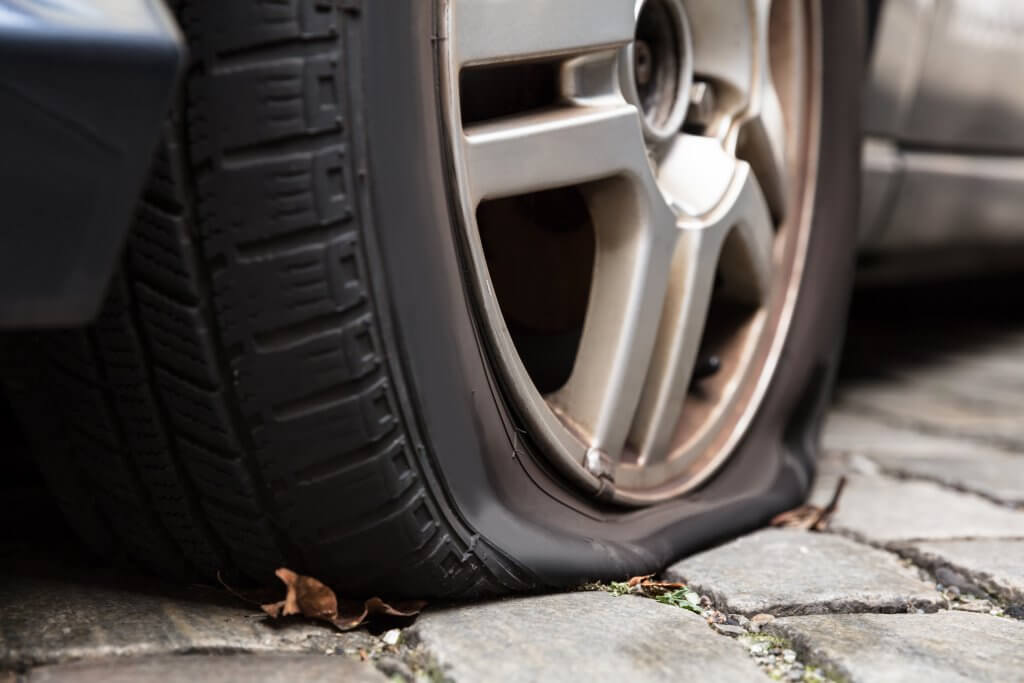
You should be having your tires rotated every 5,000-6,000 miles. For the average driver, this is about every 4-6 months.
Rotating your tires is the process of switching the tires around in a specific sequence so that they will wear evenly. The pattern changes depending on which type of drive your car is equipped with; front-wheel drive, rear-wheel drive, or all-wheel drive. The good news is that most tire shops will do this for free if you purchased your tires from them.
Doors are a thin metal that do little to block the outside noise from entering into the cabin. To make matters worse, it’s a big, hollow echo chamber. Don’t worry, there’s an easy way to help fix this issue. Soundproofing your doors isn’t very difficult or expensive, but it can have a profound effect on the amount of road noise that you hear while driving.
There are two main methods for soundproofing your doors. The first option is to use a sound blocker like Dynamat and FatMat. The second option is to use soundproofing spray.
The second option is to use soundproofing spray.
To begin, you will need to remove your door panels to get down to the bare metal beneath. If you’re using a rolled sound blocker such as DynaMat, you’ll need to cut it to shape and adhere it over the bare door metal. Make sure to make cutouts for window regulators, door handles, etc.
If using soundproofing spray, you will want to make sure the window is rolled up, so it doesn’t get sprayed. Use newspaper to cover everything in the immediate vicinity that you do not want to get overspray on. Apply the soundproofing liquid to the bare metal of the door, waiting for the designated amount of time between coats. Be sure to refer to the manufacturer’s recommendations and instructions.
Some tires are made quieter than others. Some tires are built with noise-reducing technology for the quietest ride possible. On the other hand, some tires are not built with a quiet ride as a priority at all, and there’s not much you can do to change it.
If you have noisy tires but you want a quiet ride, the best bet may be to replace your current tires with some that are intended to deliver a quiet ride. This is not the most cost-effective method. However, it could be one of the most effective ways when it comes to reducing tire noise.
A new range of acoustic tires offers the quietest ride available. Technology such as ContiSilent from Continental can reduce interior vehicle noise by as much as 9db! Other brands offer their own, similar technologies, such as the Pirelli Noise Cancelling System (PNCS), and Michelin Tires Acoustic Technology. For a comparison of the quietest tires on the market, read my post about top quietest tires on the market.
When your car is moving faster, the tires make considerably more noise due to the larger quantity of air circulating the treads. If you are a chronic high-speed driver, then you may be experiencing louder than normal tire noise because of your driving habits.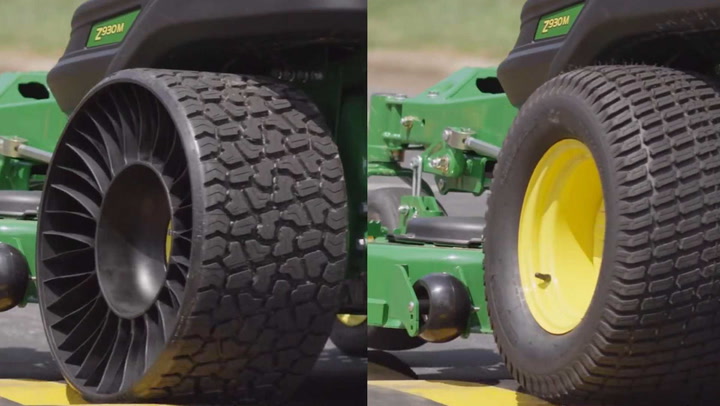 By reducing your speed, you may also reduce the amount of road noise your vehicle is creating.
By reducing your speed, you may also reduce the amount of road noise your vehicle is creating.
As we’ve discussed, many things can cause your tires to begin wearing out and become noisy. While these things can cause a tire to wear out prematurely, even well-treated tires have a lifespan of around 6-10 years. Replacing the tires within this time frame will help to ensure that your car keeps a quiet and comfortable ride.
You should be checking your tires for wear and damage regularly. Look for cracks, dry rot, obvious damage such as missing chunks of tread, and anything that may be stuck in the tire such as a screw or nail. Having your tires balanced and rotated regularly, as well as keeping them fully inflated, can all help to increase your tire’s lifespan.
If you’ve decided to look for new tires, you’ll want to know what features to look for that help a tire achieve a quiet ride. Below are a few things that you should keep in mind when looking for your next side of tires. For a complete breakdown, check out my quiet tires buying guide
For a complete breakdown, check out my quiet tires buying guide
Narrower Tires – The amount of tire that’s touching the ground is referred to as the contact patch. A larger contact patch equals more tire noise. The wider a tire is, the larger its contact patch. Avoid wide tires if you want a quiet ride.
Fewer Voids – Voids are the spaces between tread blocks. Voids of a smaller width and fewer voids overall are both things to look for that make a tire ride much quieter.
Semi-Closed Shoulder – Off-road and all-terrain tires often have open tread knobs on the shoulders for increased traction when cornering. However, this also creates increased road noise. For a quieter ride, look for tires with semi-closed treads on the shoulders.
Smaller, Varied Tread Blocks – Having tread blocks of varied sizes helps reduce tread noise. Avoid tires with uniform tread patterns where all the blocks are the same size.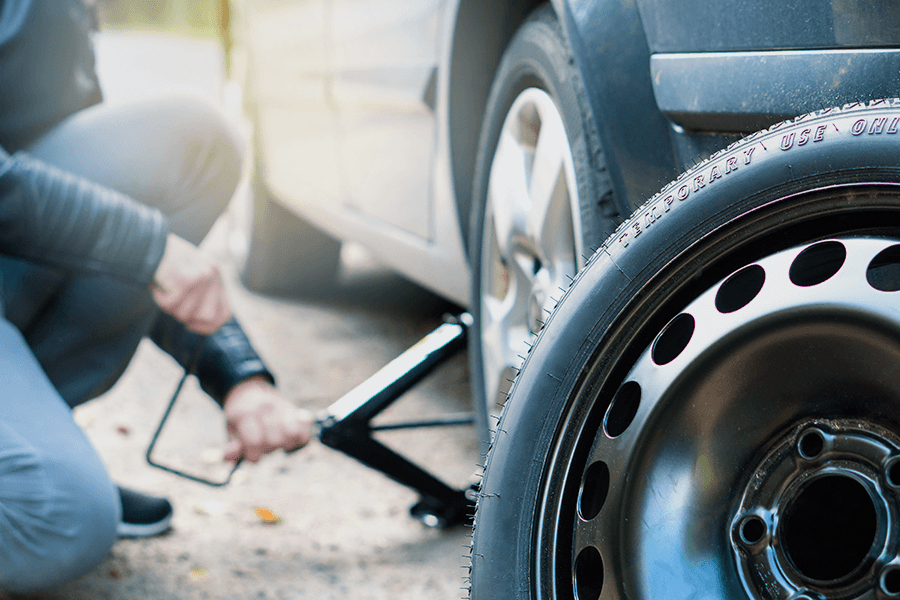 Larger tread blocks also create more noise, so look for smaller blocks of varied sizes.
Larger tread blocks also create more noise, so look for smaller blocks of varied sizes.
Circumferential Channel – These are two small grooves that run the entire circumference of the tire enclosing the tread pattern. They don’t aid in traction. Their sole purpose is to help reduce tire noise.
There are many causes of noisy tires, and many solutions exist to help mitigate the issue. After reading this article, hopefully, you understand why you’re experiencing loud tire noise, and how you can fix the problem!
If you found this information helpful, it would be greatly appreciated if you give it a share so it can reach others who may also find it useful. If you have any questions or comments, please leave them in the comments box below so I can respond.
Noise from your wheels while driving could be very distracting if you’re not used to it, and anything that distracts your attention on the road is dangerous.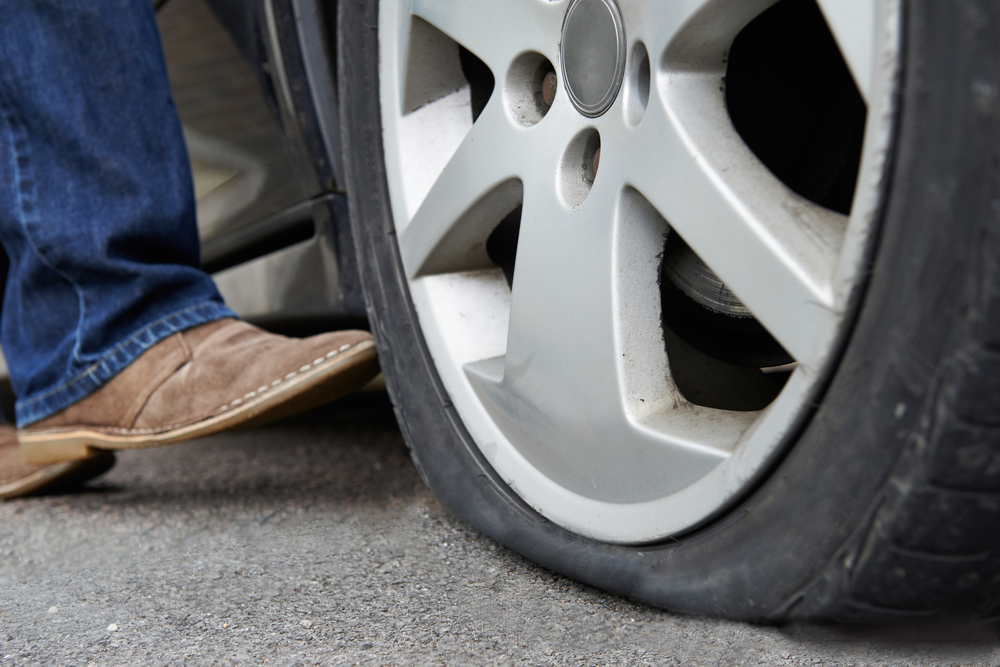
So, if you’re wondering how to reduce road noise when driving, keep reading this article for 13 different methods to achieve noiseless tires!
There are several ways to reduce the amount of noise that gets to you from your tires when driving. Depending on the reasons why the noise is occuring, where exactly it’s coming from and how loud it is, there are a lot of options that you can choose from, and you can apply different ones simultaneously for better results.
For more on the best methods to reduce road noise from tires, including interior and exterior enhancements, tire maintenance tips, and more, read on for more useful tips!
1. Rotate Your Tires RegularlyUneven wear across your tires could be one reason why there’s a lot of noise coming from your car as you drive.
If one tire has more wear than the others in your set means that certain vehicle components, including the other tires themselves, will be put under more strain, resulting in more noise.
However, you can prevent this by regularly rotating your tires so that they wear at a more even rate.
2. Balance And Align Your Wheels RegularlyAnother way to care for your wheels and ensure they don’t affect your tires to the point where they get noisy is to ensure you balance and realign them as often as possible.
Balancing refers to distributing the weight evenly across all tires, while alignment means adjusting the suspension so it connects properly to the wheels.
Overall, both processes ensure that the tires wear at a more even rate and last as long as they were designed to, resulting in a smoother and more enjoyable ride.
3. Use Soundproofing On The Car FloorYour tires are directly underneath the car floor, so adding soundproofing material to this area could significantly reduce the amount of noise from the tires that gets into the carriage from the bottom.
4. Use Soundproofing On The Car DoorsLike the above solution, this soundproofing car doors also prevents a lot of noise from getting into the carriage but from the sides.
Soundproofing the interior combines the previous two suggestions to add soundproofing material to the whole interior of the car (i.e. floor, doors and walls), which is useful for situations where you’re getting significant amounts of noise from all sides.
For this option, you might need some help from a friend or an auto shop, because you will have to unbolt a lot of parts, both interior and exterior, to install the sound deadener.
Additionally, soundproofing options use a dampening material like rubber that also doubles as thermal insulation.
6. Keep Tire Pressure Within The Recommended RangeYour tires being under inflated could be the main reason as to why they’re noisy. A tire with low air pressure makes a flapping noise due to the rubber not being as rigid as it should be.
Therefore, to resolve this issue, check the frame of the driver’s side door or contact the manufacturer for the recommended tire pressure (for regular vehicles like sedans, it’s usually between 30 and 35 PSI).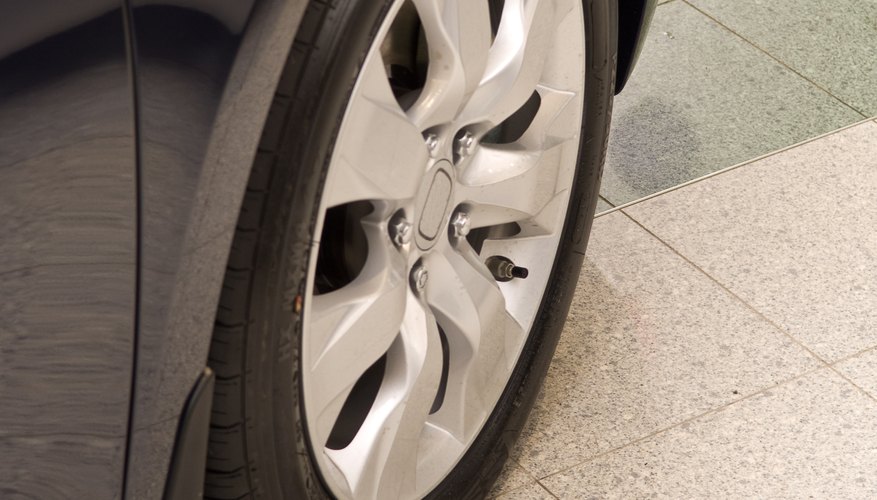
There are certain tires that have been designed to be quieter by default, for example, a tire with a more complex but fine tread pattern will make less noise than one with a simple pattern.
This is because the tire grooves allow air to move along them more effectively when compressed as opposed to remaining under the rubber.
Therefore, air getting crushed at a higher rate translates to more sound coming from the tires.
Some tires come with more ribs than usual to help the tire maintain its shape even in the event of a drop in pressure while others have reinforced edges so they’re more rigid, though both are ideal for drivers who are looking to reduce tire noise.
Additionally, a tire with smaller spaces between tread blocks is also going to provide you with a quieter ride because less air passes through them.
8. Purchase Narrower TiresA wider tire makes more contact with the pavement, which means more surface is available to produce sound, resulting in more noise.
However, if you purchase a tire with a narrower tread that still manages your vehicle’s weight requirements, you’ll notice a significant difference.
It should be noted that purchasing narrower tires is easier for a vehicle that isn’t expected to haul too much, and therefore isn’t recommended for something like an SUV or trailer.
9. Change TiresIf you have the right type of tire in terms of the factors mentioned above, but they’re still noisy, you’re probably due for a tire replacement.
In fact, most major tire manufacturers recommend that you replace your tires every six years or so and remove a tire from service completely after 10 years regardless of tread depth.
10. Drive SlowerWhen you drive slower, your tires make less noise because less air is moving through the treads. Therefore, if you’re able to drive slower within the legal speed limit, this may be a viable option to reduce noise.
11.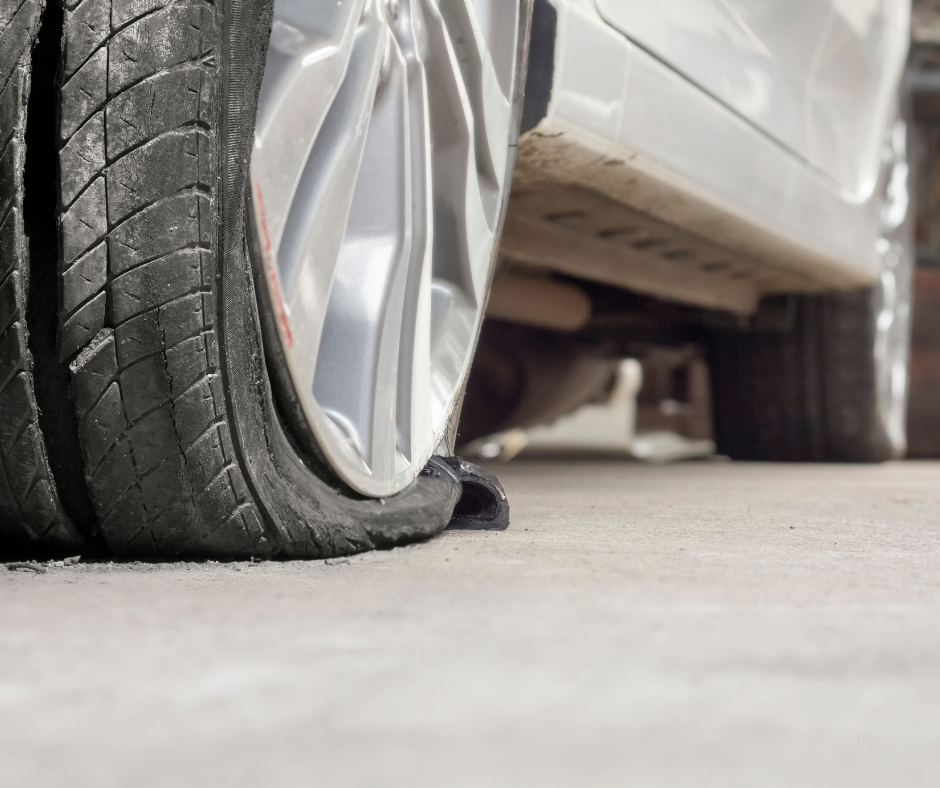 Line The Wheel Wells
Line The Wheel WellsWheel wells are the arches on the outside of the chassis surrounding the wheels, which you can modify so they reduce the noise from the wheels in your carriage.
One way to line the wheel wells is to do so with a sound dampening material that can catch vibrations from the wheels and weaken them before they have the chance to develop into sound.
Another approach is to line the wheel wells with a weighty material that can absorb the sound before it gets to the carriage.
Nevertheless, when using either of these two methods, make sure that you leave enough of a clearance between your wheel well lining and the tires, because you don’t want to interfere with their ability to move freely.
In fact, if you do the opposite, you will end up creating even more tire noise as well as risk of an accident.
12. Replace Door SealsWith the door open, you can see they’re lined with rubber, and while it’s primary to use thermal insulation, it also plays a significant role in absorbing the sounds from your tire.
If your car is old, the lining may have become worn, meaning you may need to replace it and repair one if it’s broken in certain parts.
You also have the option to add another strip of lining to complement the original lining, which will add to its overall effectiveness while maintaining the door’s ability to close properly.
Note that when buying the seal, especially from online vendors, make sure you’re purchasing the right size for your car by shape, size and other similar factors.
13. Clean Out The Tire TreadAs you drive, small amounts of debris could get caught between the grooves in your tire’s tread, which may cause noise.
A straightforward way to combat this is to inspect all your tires for debris like tiny rocks and sticks, removing them, and then power washing the tire.
To learn more about tires, you can also see our posts on tires noisy after rotation, quiet tires, what causes tire noise at low speed, and if tires make noise.
If you notice noise coming from your tires while driving, soundproofing is an option that you can apply on individual parts or the whole interior of the car depending on the level of noise.
Having a regular and thorough tire/wheel maintenance routine also helps to keep wear across the set even and allows you to get the most use out of your tires. Additionally, cleaning out any debris that gets caught in the tread will also help bring the noise down.
Author Teplov Pavel Reading 5 min. Views 18 Posted by
For a smooth ride, look for tires with at least a few grooves all around and lots of smaller ones with diagonally oriented water sipes connecting them. Small diagonal channels will allow compressed air to enter the longitudinal grooves, and not be compressed under the rubber. In fact, in general, the thinner and more complex the tread pattern looks, the quieter it will be. You might think that a tire that offers good traction in the rain will be the quietest, and this is often the case, but not always. Air is thinner and moves faster than water, so giving it room to exit means having lots of tiny, backward-sloping channels all over the tread, rather than a few larger, more horizontal channels.
For a typical car, you would look for Grand Touring, Standard Touring or Passenger all-season tires with fairly high levels of tread wear, good wet grip and hydroplaning resistance.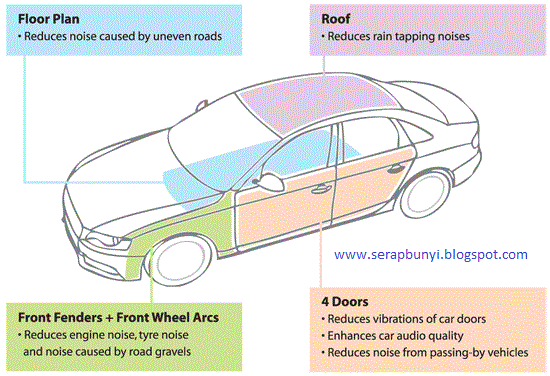 Tires with low rolling resistance are also a good bet. The same is true for trucks and SUVs, but you're looking for Highway or Touring all-season tires. Again, water and air act somewhat differently, but a tire that wicks water well will tend to do the same with air. Quieter all-season tires will also perform better on ice and snow because those small tread blocks and grooves that help out in the snow work very well when it comes to compressing the air. Another benefit of these tire designs is that they tend to use rubber compounds and construction methods optimized for highway fuel economy, which is another thing to look out for when shopping.
Tires with low rolling resistance are also a good bet. The same is true for trucks and SUVs, but you're looking for Highway or Touring all-season tires. Again, water and air act somewhat differently, but a tire that wicks water well will tend to do the same with air. Quieter all-season tires will also perform better on ice and snow because those small tread blocks and grooves that help out in the snow work very well when it comes to compressing the air. Another benefit of these tire designs is that they tend to use rubber compounds and construction methods optimized for highway fuel economy, which is another thing to look out for when shopping.
As of 2014, there are at least a few tires that really stand out in terms of tire noise. department without sacrificing traction and performance elsewhere. Among all-season passenger car and standard touring tires, Continental ProContact with EcoPlus technology is a popular choice, but Goodyear Assurance Comfortread and Nokian Entyre are even quieter.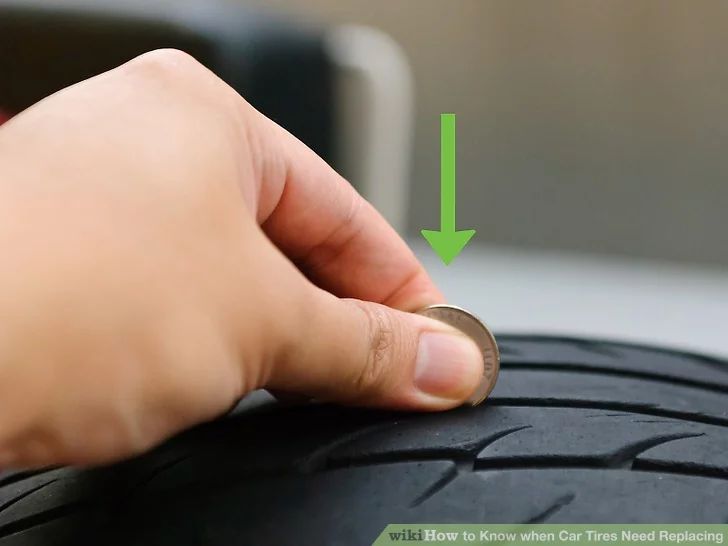 The Michelin-rated Defender isn't as quiet as the Goodyear, but it offers much better performance and tread wear rates. Among the Grand Touring Bridgestone tires, the Ecopia EP422 is quiet, as are the higher performance and durability Turanza Serenity Plus tires. The Michelin Primacy MXV4 is highly awarded in this category for being the quietest, most versatile and most productive overall. It's not as good as the Turanza in the wet, but just as good in the dry and better on snow and ice. If you're after high-performance tires that won't break your ears, look no further than the Kumho Ecsta 4X or Continental's excellent ExtremeContact DWS.
The Michelin-rated Defender isn't as quiet as the Goodyear, but it offers much better performance and tread wear rates. Among the Grand Touring Bridgestone tires, the Ecopia EP422 is quiet, as are the higher performance and durability Turanza Serenity Plus tires. The Michelin Primacy MXV4 is highly awarded in this category for being the quietest, most versatile and most productive overall. It's not as good as the Turanza in the wet, but just as good in the dry and better on snow and ice. If you're after high-performance tires that won't break your ears, look no further than the Kumho Ecsta 4X or Continental's excellent ExtremeContact DWS.
A quieter ride isn't always about choosing tires. A tire with low air pressure hits the ground more flatly, and the rubber tends to squeal and rub; You can hear this very clearly if you've ever driven a flat tire. So keep your tires inflated. Tire noise also increases with wear because some of the smaller, shallower grooves that used to allow air to escape have worn out. This wear-induced noise can be a real problem with high-speed performance tires, which may use a certain number of shallow or half-depth grooves to improve high-speed stability. There is little you can do about wear-induced noise other than delay it by regularly checking air pressure and spinning the tires. Finally, take weight off the machine if possible. A heavy vehicle pushes the tire down, which has about the same effect on noise as insufficient pressure.
This wear-induced noise can be a real problem with high-speed performance tires, which may use a certain number of shallow or half-depth grooves to improve high-speed stability. There is little you can do about wear-induced noise other than delay it by regularly checking air pressure and spinning the tires. Finally, take weight off the machine if possible. A heavy vehicle pushes the tire down, which has about the same effect on noise as insufficient pressure.
Road noise in tires is primarily the result of three factors: the ridges and imperfections of the tires hitting the road, the air trapped under the rubber blocks of the tread that compresses like tiny corks emerging from tiny champagne bottles, and the screech of rubber compressing the road. Each of them has different causes, but the problem is always with the tire itself. So if you want a quieter ride, you'll need new tires - that might involve a few compromises on your part, but you might be surprised how small those compromises have to be.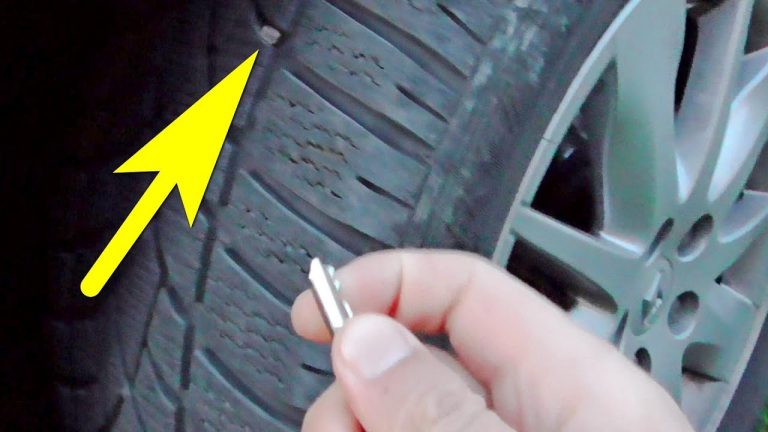
Contents
The key to a quiet ride tire is to avoid as much compression as possible under the tire. As the tires roll on the road, air gets trapped between the tread blocks and the road. As the air exits the back and unpacks, it makes a crackling sound; if this "pop" happens thousands of times a second, you'll get what sounds like a buzzing, monotonous hum. Off-road tires with large, flat knobs can cut into soft ground like a set of spikes, but those knobs grab and crush the air underneath. Tires with large, evenly spaced side tread blocks and multiple straight longitudinal grooves around the circumference of the tire will trap air underneath. Avoid tires with large tread blocks separated by only a few very thick grooves.
For a quiet ride, look for tires with at least a few grooves all around and lots of small, diagonally oriented water "slots" connecting them.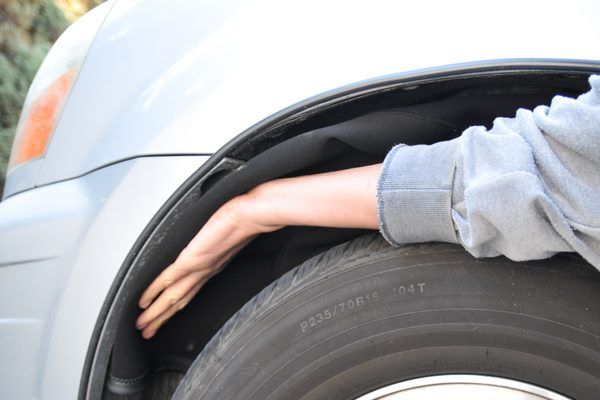 Small diagonal channels will allow compressed air to enter the longitudinal grooves, rather than being compressed under the rubber. In fact, the thinner and more complex the tread pattern looks, the quieter it will be. You might think that a tire that provides good traction in the rain will be the quietest, and this is often the case, but not always. Air is thinner and moves faster than water, so giving it room to exit means having lots of tiny sloping channels all over the tread rather than a few larger horizontal channels.
Small diagonal channels will allow compressed air to enter the longitudinal grooves, rather than being compressed under the rubber. In fact, the thinner and more complex the tread pattern looks, the quieter it will be. You might think that a tire that provides good traction in the rain will be the quietest, and this is often the case, but not always. Air is thinner and moves faster than water, so giving it room to exit means having lots of tiny sloping channels all over the tread rather than a few larger horizontal channels.
For a typical car, you'll want Grand Touring, Standard Touring, or Passenger all-season tires with fairly high wear ratings, good wet grip, and hydroplaning resistance. Tires with low rolling resistance are also good choices. The same applies to trucks and SUVs, but you're looking for Highway or Touring all-season tires. Again, water and air act slightly differently, but a tire that wicks water well will tend to do the same with air.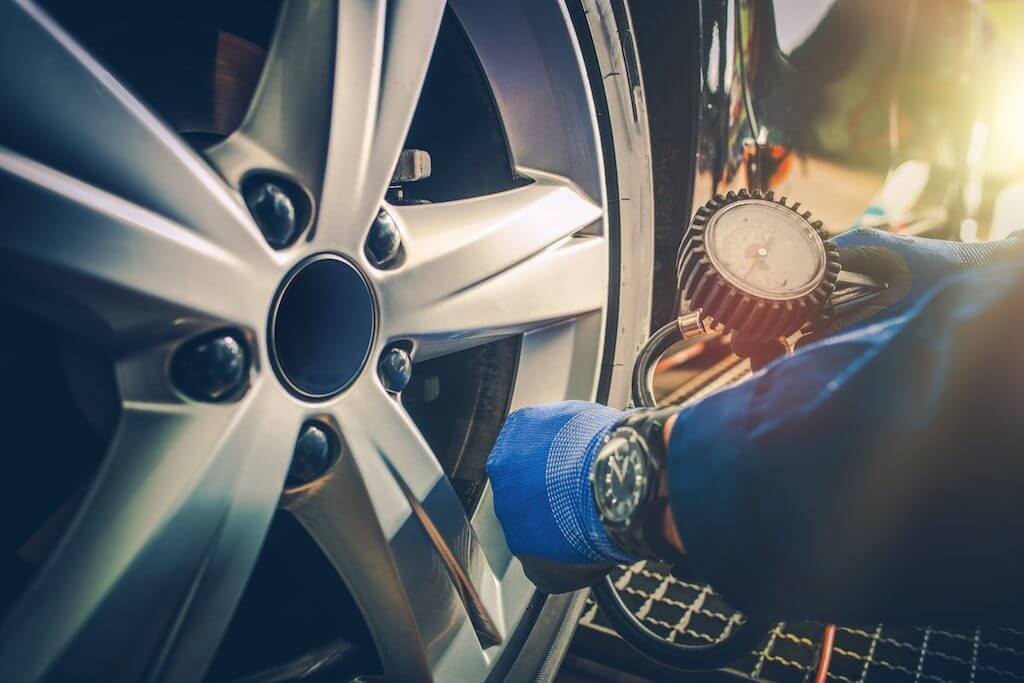 Quieter all-season tires also tend to score higher on ice and snow because the same small tread blocks and grooves that help on snow work very well when it comes to compressing air. Another feature of these tire designs is that they tend to use rubber compounds and construction methods that are optimized for highway fuel economy, something to look out for when buying.
Quieter all-season tires also tend to score higher on ice and snow because the same small tread blocks and grooves that help on snow work very well when it comes to compressing air. Another feature of these tire designs is that they tend to use rubber compounds and construction methods that are optimized for highway fuel economy, something to look out for when buying.
As of 2014, there are at least a few tires that truly outperform the tire noise department without sacrificing traction and performance elsewhere. Among passenger and standard touring all-season tires, the Continental ProContact with EcoPlus technology is a popular choice, but the Goodyear Assurance Comfortread and Nokian Entyre are even quieter. The top-rated Michelin Defender isn't as quiet as the Goodyear, but it does offer a much better performance and treadmill rating. Among Grand Touring Bridgestone tires, the Ecopia EP422 is silent, but its own much more efficient and durable Turanza Serenity Plus.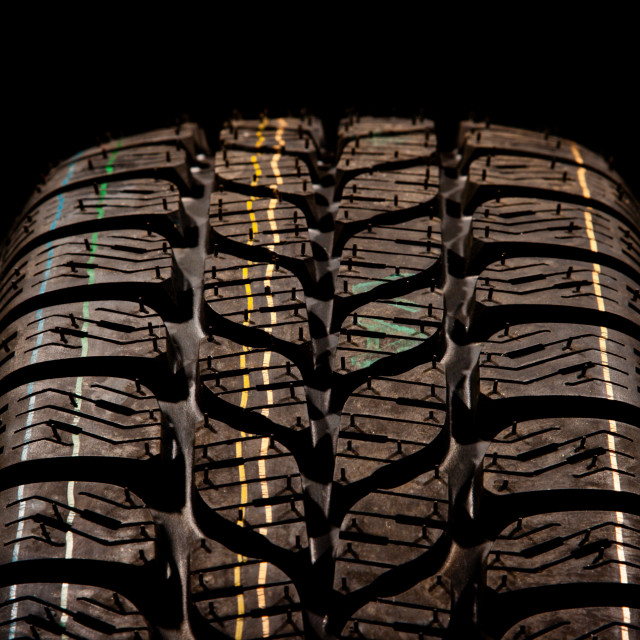 Michelin's Primacy MXV4 wins high awards in this category for being the quietest, most versatile and best performing overall. It's not as good as the Turanza in the wet, but just as good in the dry and better on snow and ice. For high performance tires that won't break your ears, check out the Kumho Ecsta 4X or the excellent ExtremeContact DWS Continental.
Michelin's Primacy MXV4 wins high awards in this category for being the quietest, most versatile and best performing overall. It's not as good as the Turanza in the wet, but just as good in the dry and better on snow and ice. For high performance tires that won't break your ears, check out the Kumho Ecsta 4X or the excellent ExtremeContact DWS Continental.
Getting a quieter ride doesn't always come down to choosing tires alone. A tire with low air pressure slaps the ground in a more flat-footed way, and rubber tends to squeal and rub; You can hear it very clearly if you've ever driven a flat tire. So keep your tires properly inflated. Tire noise will also increase with wear because some of the smaller and smaller grooves that allowed air to escape have been worn out. This wear-induced noise can be a real problem with high-speed performance tires, which may use a certain number of shallow or half-depth grooves to improve high-speed stability.